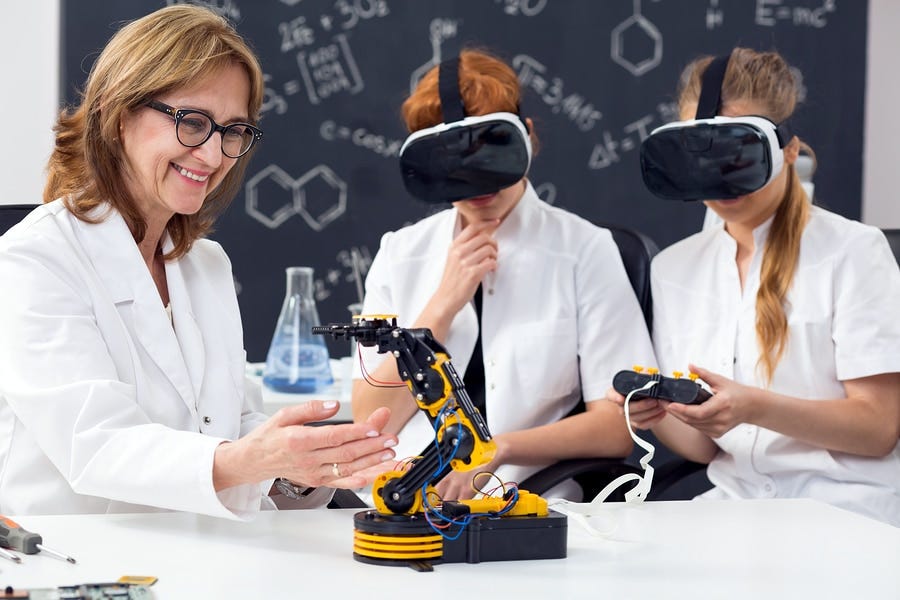
While virtual reality is accruing a great amount of attention these days thanks to devices such as Gear VR and Oculus Rift, virtual reality training has gained adoption in academics, companies and the military for a long time now. Essentially, the VR-based training makes use of the specially-designed audio-visual headsets to deliver the subject matter to the trainee through the 3D environment. Such approaches have special advantages that will become readily available to the trainee. While it is essential in cutting out any form of distraction, it immerses the trainee into the 3D simulation process like in the real-life situation. Let us look at the advantages of the VR-based training.
1. Makes learning more visual
Humans, according to research, are visual creates intensely. More than 90 percent of all information sent to the most proficient parts of the brain for learning purposes emanate from visual impressions. We also need to understand that more than 93 percent of all visual conversations are visual. With the use of the VR-based training, the training process is made visual to make the subject represented in three dimensions and visually stunning to make a lasting learning impression.

2. Makes learning more affordable
For the past few decades, VR-based training has been the pioneer learning instrument for high-end government, commercial, and military applications. Simple virtual reality headsets are coupled up with a 70-degree field of view with a revolution on both eyes would not cost more than $25,000. Compare this price to the reality issues that can cause damage to property before one acquires the full education. With failing hardware and increasing product prices, more developers are developing virtual reality-specific content that is intended to make an eco-system of applications to make learning more efficient and fun.
3. Virtual Reality makes learning safer
One of the most common occurrences in the reality training sessions is unavoidable accidents. This is also a common occurrence in many energy, defense, and manufacturing industries. Some of these accidents can be extremely fatal. While the novice is more likely to make many mistakes, it is important to provide a safer place for them to learn effectively. They must also practice their skills safely for more confidence in reality. The novice can have ample time clearing their skills to perfection to start their work with a near-perfect command.
4. VR-based training can be implemented remotely
With the trends coming up these days like the bring-your-own-device is becoming more common. According to a recent study, the world is moving to a place where workplaces are decentralized to have people collaborate from various locations regardless of the distance. Since the VR-based training headsets are readily available at various stores, they can be implemented remotely and for training purposes. The trainee can also access and download material from the website for use wherever he/she wants.
In the end, VR-based training aids recall and retention. The essence of learning is to have the capability to recall and remember whatever you learn. Since the trainee can practice their skills as needed, the knowledge is imported into their muscle memory as well.





